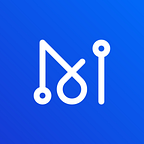Empowering the AI Revolution: The Global Distributed Resource Network of MATRIX (1/4)
1. The Great Era of Artificial Intelligence
The term “Artificial Intelligence” was first coined at the Dartmouth Conference in 1956. Since the inception of AI, scientists and engineers have conducted extensive research and development, evolving numerous theories and principles, and thus expanding the concept of artificial intelligence. Up to this day, AI has permeated every corner of societal life. Autonomous vehicles are gradually becoming mainstream, bringing significant changes to the transportation and logistics industries; AI has enabled more accurate medical diagnoses; improved search engines allow us to access knowledge and information more efficiently; machines can now understand text to provide various Q&A services, replacing human customer service. Meanwhile, we also see AI playing an increasingly vital role in investment, in both long-term trading, short-term underwriting, lending, and credit authorization.
We have witnessed the accelerating pace of AI technology development. In less than a year of research and training, AlphaGo achieved victory over Go player Lee Sedol. In the field of computer vision, or the AI system’s ability to recognize photos and images, a recent large-scale visual recognition challenge featured over 1000 categories of images. During this challenge, human accuracy in visual recognition typically reached 95%. However, in the past five years, AI’s accuracy has increased sixfold, achieving a 98% accuracy rate in the competition, surpassing the level of human visual recognition experts. This marks a significant advancement; AI diagnostic technology, especially in diagnosing lung and thyroid cancers, has made considerable progress, with AI’s diagnostic accuracy far surpassing that of seasoned doctors, becoming the most powerful auxiliary diagnostic tool in the medical industry today.
2. Blockchain Empowers AI — Intelligence that Collaborates with Us
Will AI, as depicted in movies, dominate and eradicate humanity in the future? This question arises amidst the rapid development of AI technology, and experts have been diligently working towards a resolution. As Tom Gruber, co-founder of Siri and an AI developer, puts it, “What is the purpose of artificial intelligence? It’s to make machines smart so they can perform automated tasks we don’t want to do, like defeating us in complex games such as chess and Go. Perhaps in the future, the development of superintelligent AI could become the ruler of humanity? No, AI should not compete with us but rather enhance our collaboration. Superintelligence should grant us superhuman abilities, for example, helping individuals with cerebral palsy communicate with Siri, assisting us in various tasks from navigating cities to answering complex questions.”
So, how can we achieve peaceful coexistence between AI and humans? The well-known AI blockchain project MATRIX offers their answer. In version 1.0, MATRIX leverages artificial intelligence to empower blockchain, significantly improving blockchain’s performance, security, and public welfare aspects, creating an efficient and user-friendly blockchain platform. Atop this blockchain platform, MATRIX plans to construct a version 2.0 — an AI ecosystem managed by a high-performance blockchain.
In this system architecture, AI is no longer centralized. Artificial intelligence will be managed and applied based on a decentralized blockchain network, and each AI node will make decisions and operate through the network’s consensus mechanism. This will directly prevent the centralization of AI from “awakening” in the future. At the same time, AI nodes within the decentralized network can collaborate more effectively, thereby better cooperating with humans and serving humanity.
3. The Era of Personal AI — Everyone Has Their Own AI
To usher in the explosion of the AI era, it’s crucial to lower the entry barrier to artificial intelligence, thereby effectively enhancing the diversity of the AI ecosystem. Just like in natural ecosystems, greater biodiversity promotes vitality and development.
MANTA, soon to be launched by MATRIX, seems to be the key to unlocking the era of personal AI. With MANTA, the entry barrier to AI will be significantly reduced, making it possible for everyone to own their personal AI in the future. After all, for AI service providers, offering highly personalized AI services is challenging. Firstly, it would significantly increase the development costs for businesses. Secondly, personalized services based on individual data are difficult because users are reluctant to share their most private data. Therefore, training an AI algorithm that serves an individual’s specific needs is an effective solution, and the emergence of MANTA will realize this scenario excellently.
The Matrix AI Network was founded in 2017. In 2023, we enter Matrix 3.0 blending neuroscience with our previous work to realize the vision of the Matrix films.
FOLLOW MATRIX:
Website | GitHub | Twitter | YouTube
Telegram (Official) | Telegram (Masternodes)
Owen Tao (CEO) | Steve Deng (Chief AI Scientist) | Eric Choy (CMTO)
